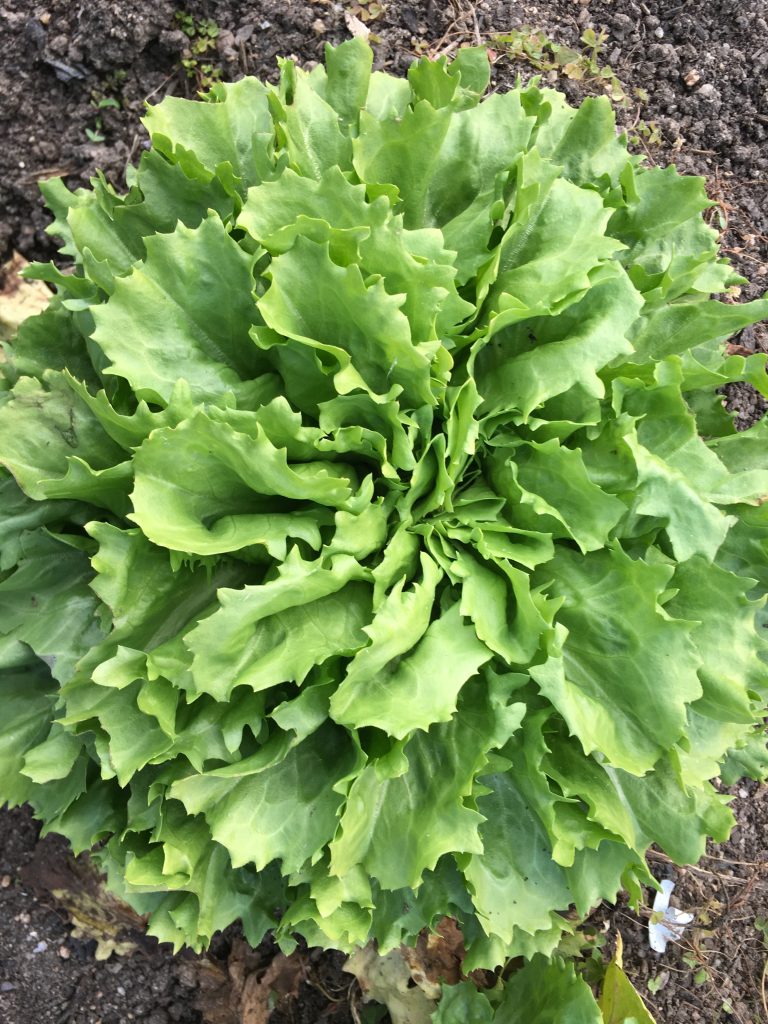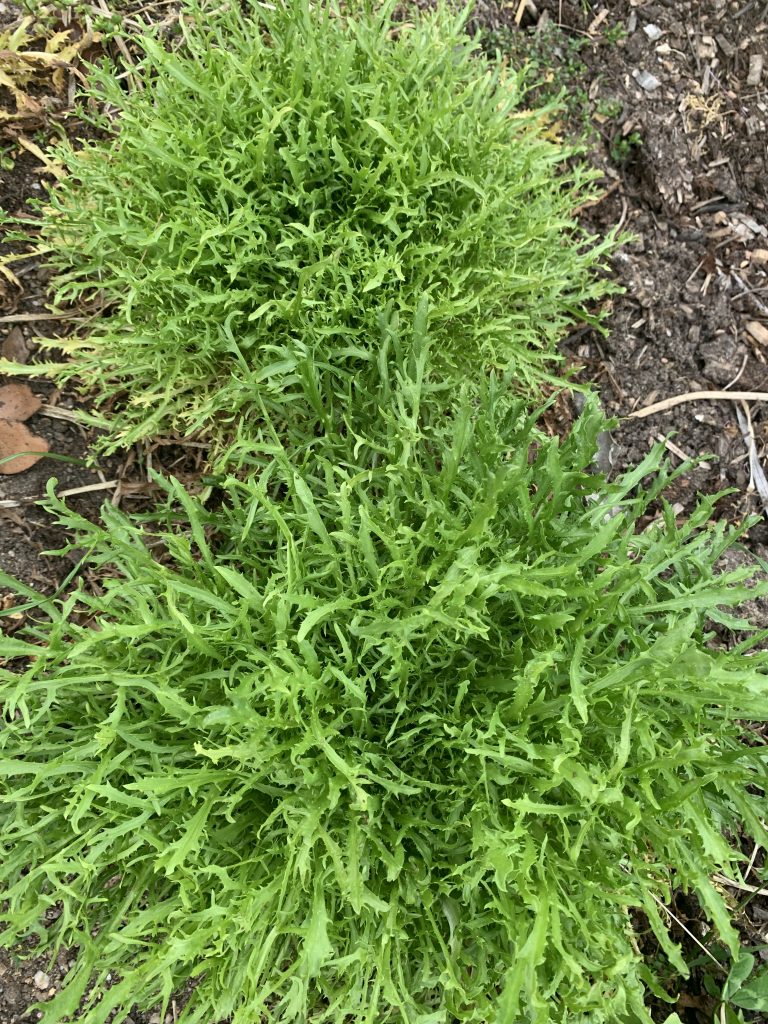Botanical name : Cichorium endiva
Common name : Endive, Curly endive, Frisée, Broad-leaf endive, Escarole
Easy for seed saving
Lifecycle: Annual
Pollination: Self pollinating
Mating system: Flowers are pollinated before stigmas become exposed
Suggested spacing: Flowering plants become large, so extra space is required. 45cm or more
Seed specific requirements: None
Isolation distance: 3 m
Population size: 5 plants. A single plant will produce viable seed
Seed maturity: When the containing flower bracts become brown and dry
Processing method: Dry threshing and winnowing
Expected seed viability: 6 years
Images


Growing for seed
As endive flowers are pollinated before they are fully open there is little chance of them being pollinated by other Cichorium species. Conversely, chicory can be pollinated by endive.
They do require larger spacing in the garden than when they are grown for eating as they become large plants with branched flower spikes up to 1 m tall. Giving them at least 45 cm in all directions is recommended.
Selection
Leaf form and flavour, as well as plant vigour are the main selection criteria for endives.
Harvest
Endives flower indeterminately over the growing season. So there will be fresh flowers and maturing bracts at the same time. If harvesting the whole plant or a branch they should be cut when about 60% of the bract capsules are brown and dry. It is likely that fully dried and mature capsules will shatter in the garden before all the capsules mature so judgement will be required to determine when enough are mature for harvesting.
Processing
Endive can be difficult to process. The most mature seed usually drops from the flower bracts during drying. Less mature bracts hang on to the seed and need to be broken open to release it. Seed savers can use tools like rolling pins and mallets to break open the bract capsules to release the seed.
The very small, fine seed can also be difficult to winnow. The seeds are white and look like tiny, filled thimbles.
Contributors
Liz Worth, Nellie Pryke
